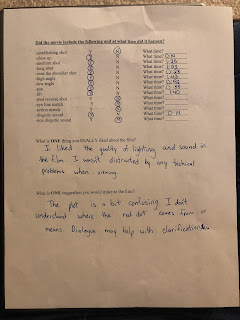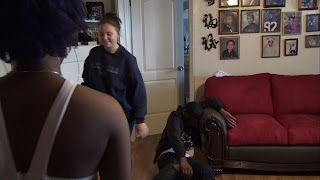5. In relation to the media area you have studied, discuss the ways audience consumption has changed over time.
The film industry has evolved over the years with new consumption methods. When it comes to movies each new distribution method has only enhanced the total consumption of movies while older methods are still prevalent. These methods further expand the range of people and audiences who will view a film.
The obvious first start of the movie industry is on the infamous silver screen. From the early 20s into today, films are screened in a theater setting. The culture of a film was created for a movie theater setting back in the beginnings of the film industry. It was a posh event due to that being one of the new and luxurious media platforms of the time. Movies featured intermissions, people dressed up to attend a movie screening, and movie stars were at the top of the social pyramid. According to Guinness World Records, the classic film Gone with the Wind is the highest-grossing film in the box office at an (inflation-adjusted) total of $3.44 billion. This film was a major influencing film of the time at a running time of over 3 hours with full intermission and score. Movies are still classically screened as it is still a major source of revenue. Others just find it nostalgic to sit in a movie theater even though the culture has definitely shifted from a posh affair to a more comfortable and casual scene.
Movies then were adapted for the square screen on your at-home television (TV). Announcements were made in the newspaper to what movies were going to be screened for that week. IMDB states that Disney aired the “Disney Sunday Movie” from 1986-88. Movies were able to be more easily screened by more people by allowing television stations to purchase the rights to air a movie live on TV. Classic adapted films of this time were Gone with the Wind and The Wizard of OZ. The annual tradition of The Wizard of OZ on tv drew more of an audience towards that film as people would flock to the channel for this special occasion. USA Today states that this tradition just ended with it running for an overall 60 years. Today, we still have many films screened live on TV like Holiday movies, nostalgic films, and back to back marathons of a movie series such as the Harry Potter series.
Once movies entered our home we never stopped evolving home consumption of films. People now wanted physical copies of a film so they could watch it whenever they wanted to. Introducing the video home system (VHS) tape. “The South Korean drama, The Young Teacher, was the first film to be released for home VHS consumption. Considering the first VCRs were released in 1976, it makes perfect sense that the first movies would also accompany it in the same year,” states Legendarybox.com. The only problem with VHS tapes was that you had to rewind the tape to the beginning to rewatch the film. This was solved with the invention of the Laserdisc which was circular that allowed the film to play and not be rewinded. The only downside was that they were huge disks that could not store much data. Digital video disk (DVD) was then introduced as a more compact circular model. This allowed people to even double consumption of film where they would watch it when it came out in theaters and then buy the DVD to rewatch later.
VHS and CD buying then evolved to renting physical copies of a film. Companies such as BlockBuster, Netflix, and Redbox were invented for the people who want to view movies but not commit to a full purchase of the DVD forever. These National companies and some privately owned rental stores would allow people to rent out DVDs for a fee and return them. Blockbuster was a storefront, Netflix was a mailing service, and Redbox was a grocery store kiosk. These rental places dominated the home consumption sector of the movie industry. Business Insider states “At its peak in the late '90s, Blockbuster owned over 9,000 video-rental stores in the United States, employed 84,000 people worldwide, and had 65 million registered customers. Once valued as a $3 billion company, in just one year, Blockbuster earned $800 million in late fees alone.” These types of physical rental places were eventually replaced with the digital era.
Lastly, the digital era of film has swept the nation and is till the latest development. It started with the introduction of “On-demand” movies provided by your cable company where you could purchase or rent a movie but all through your TV. On-demand turned into subscription platforms to stream films and TV like Netflix, Hulu, Amazon, Youtube TV, Apple Tv, and Disney+. A customer will pay a monthly fee to stream unlimited movies. In addition, many of these platforms are making exclusive content for their platform like original Movies that will never see the silver screen. Today movies are consumed within the audience’s home all through the internet. Most recently, the coronavirus has prevented people from going out to theaters to see newly released movies, so some movies had an only digital release directly to On-demand and streaming services due to nationwide stay-at-home orders. Newsweek.com stated, “Movies usually have a seven-month gap between airing in theaters and coming to streaming services, Onward will come to the Disney streaming service just under a month after its original cinema release.”
All things considered, the film industry has evolved over the years to fit our media consumption wants and needs. The unique thing about movies is that the original movie theater screening is still the preferred way to watch a movie by many people as it is still very prevalent today as it was back in the 1920s.


















